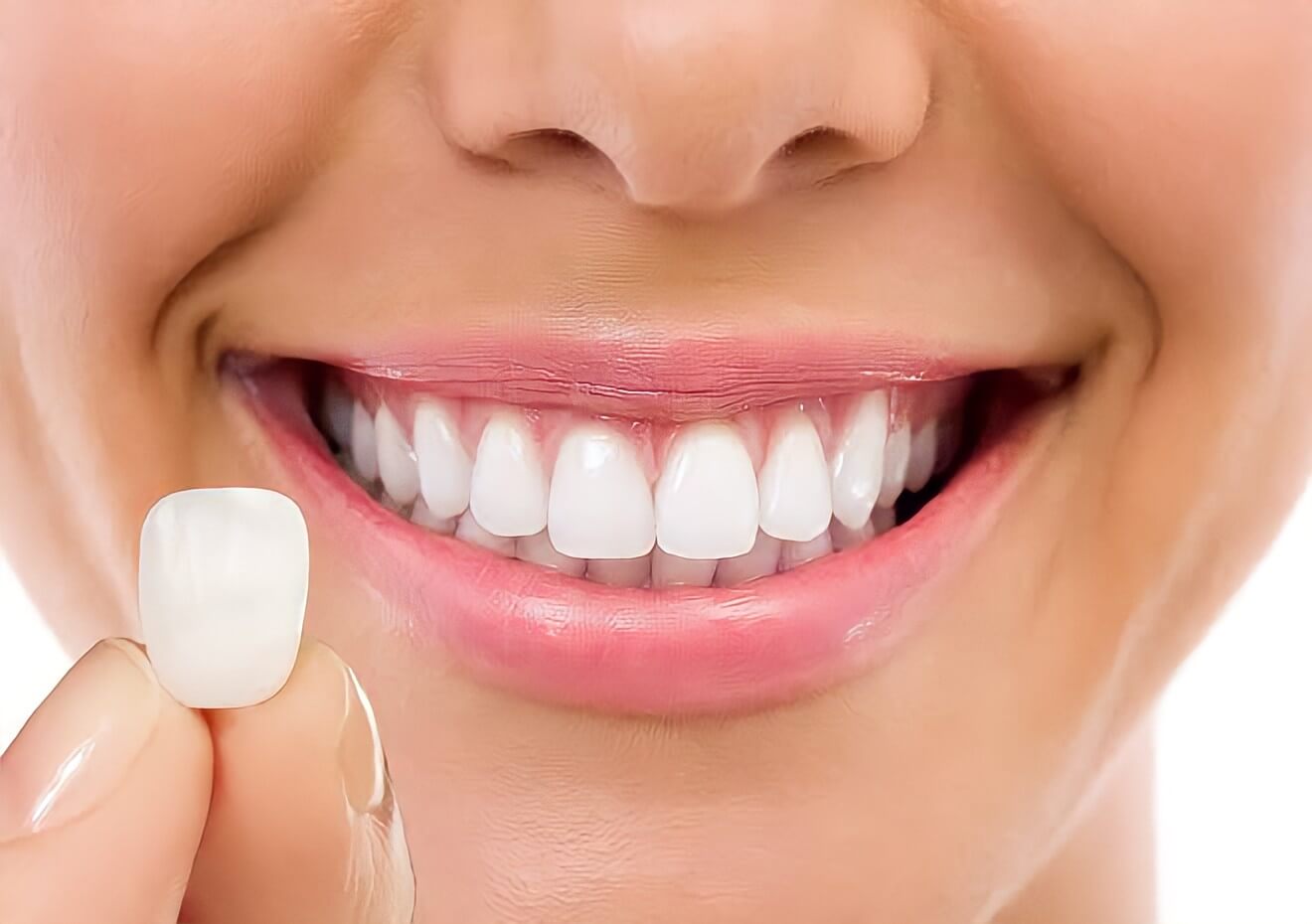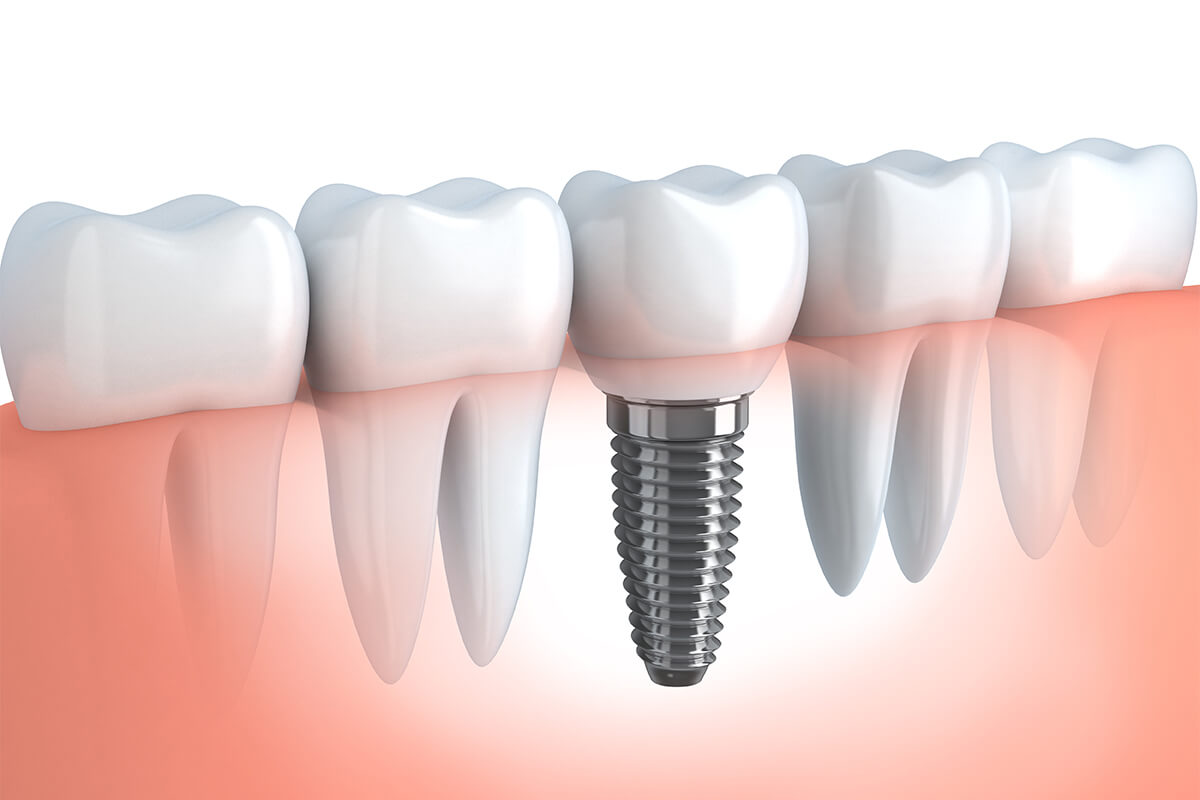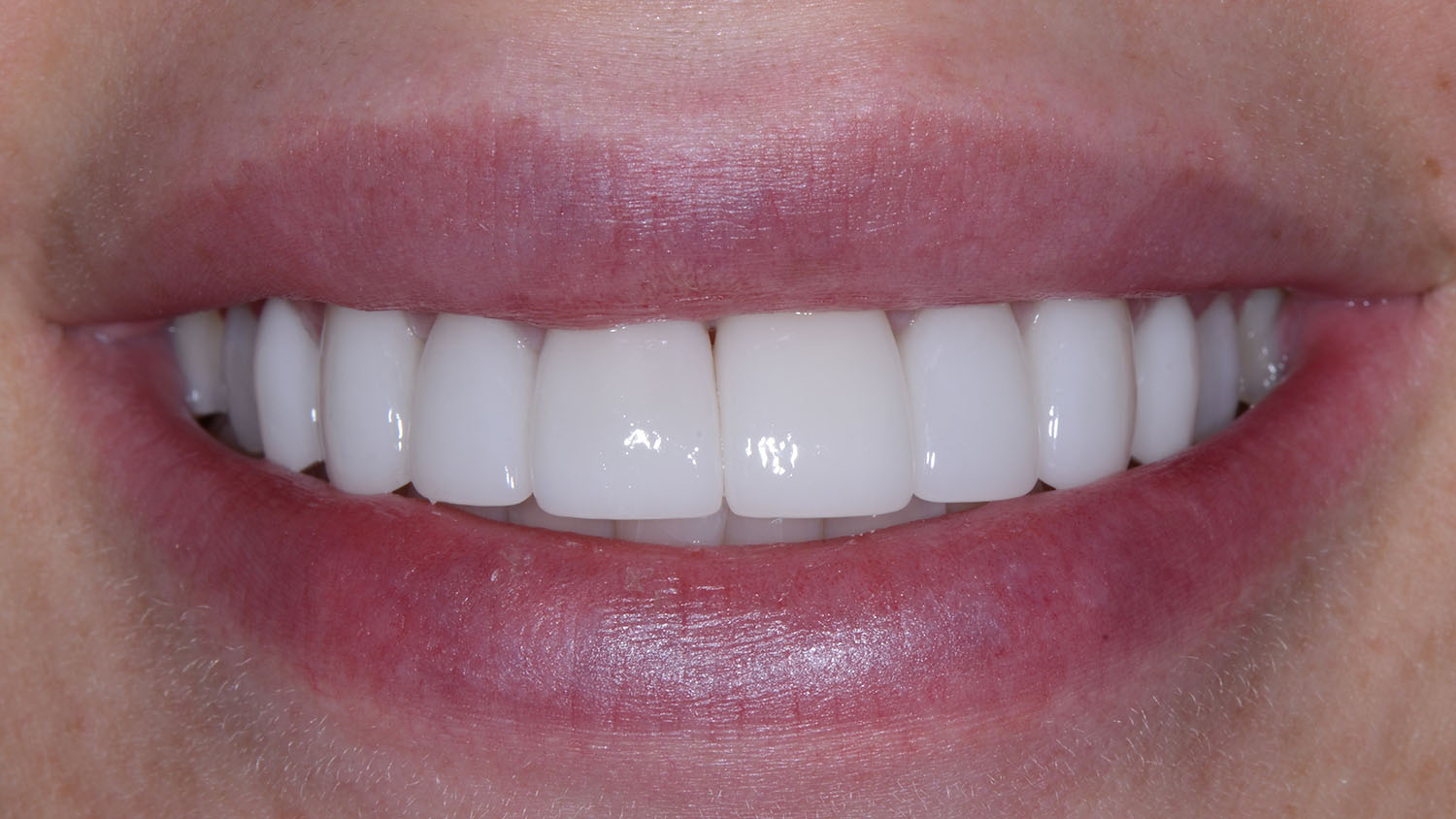What is zirconia crown?
Zirconium is a non-metallic, non-allergenic, natural white aesthetic alloy that eliminates the negative effects of metal-based crowns. Gingival compatibility applied to the tooth surface and areas of missing teeth is a good crown material.
Porcelain crowns are crowns that are closest in hardness to natural teeth. Due to its fragile structure, its resistance to chewing force is insufficient. Due to this inadequacy, metal crowns were used instead. Metal crowns are durable, but because their light transmission is not at the desired level, the natural appearance of the teeth cannot be achieved completely and can cause allergic reactions. Zirconia crown offers a more natural appearance compared to metal-backed crowns. Compatibility with living tissue, light transmittance, and durability have made zirconium advantageous. In crown or bridge prosthetics, zirconium alloy is used, whose resistance is close to that of metal, instead of metallic infrastructure.
Zirconia crown is more durable than other crowns. It does not leave a metallic taste in the mouth. It is non-corrosive, white and has a light permeable characteristic. It does not have allergic properties. The zirconia crown is a method used by dentists to obtain an aesthetic appearance and make oral dental functions more functional. In cases where tooth whitening is insufficient, zirconium comes into action and guarantees the desired appearance of the teeth.
Zirconium is also used as a substructure material in the zirconia crown. Because the framework material is white, the gray-black shadows on the gums found on metal-supported crowns do not occur. Zirconium is among the biocompatible materials. Gingival compatibility and light transmission are superior to metal-backed crowns. In addition to these, the zirconia crown has many other advantages.
What is zirconia?
Zirconia is a high-performance ceramic. It is used in many fields, especially in the aerospace industry. When zirconium combines with oxygen, it consists of zirconia (zirconium dioxide-ZrO2) as used in dentistry. Zirconia; It is ivory-white and transparent in color, gives a natural appearance to teeth thanks to its light transmittance, is very durable, does not conduct heat, cold and electricity, is biocompatible and does not suffer from corrosion (rust). Clinical studies have revealed that zirconia can last for many years. These features have made it a highly preferred and reliable infrastructure material in dentistry.
What are the properties of zirconium?
Zirconium is a grayish-white material with the symbol “Zr”, resistant to heat and corrosion and highly resistant to rust and calcification. It is generally used in nuclear energy, jewelry manufacturing, steel industry, production of heat-resistant military equipment, perfume industry, and surgical and dental materials.
Reasons for preference in Dentistry; It is durable, does not cause an allergic reaction, can be applied to any tooth color, is natural, harder than titanium or steel, lighter and has full light transmission. Because of the color of ivory, it is not easy to distinguish zirconia teeth from natural teeth. Thanks to its light permeability, it does not cause vitamin D deficiency.
Zirconium teeth are a durable, non-metallic alternative to traditional dental materials. They are more durable and long-lasting than porcelain and ceramic. It does not interact with any food or drink. Gum bruising seen with porcelain crowns is not seen with zirconia crowns.
What are the advantages of having zirconium crown in Antalya?
- We can list the advantages of the zirconia crown as follows;
- The colors of the zirconia crown add an aesthetic appearance.
- There is no age restriction for the procedure.
- They are easily shaped and can be easily transformed into white color.
- As the file is smaller, the natural structure of the teeth does not deteriorate.
- Does not cause bruising and gum irritation.
- It has high resistance and a very solid structure.
- It does not cause recession or any other problem with the gums.
- It has high light transmittance.
- As the zirconia crown can be applied to teeth of any color, it allows you to achieve the desired result even on darkened teeth.
- As it does not cause metal allergies, it can be easily used by people with metal allergies.
- Can be used on all teeth.
- It does not require replacement or repair for an average of 12 years if used in its condition.
- It is lighter than metal subframe crowns.
- Aging in metal-supported crowns does not occur.
- There is no unnatural metal appearance.
- As it provides 100% color matching with the original teeth, it is impossible to tell even when some teeth are covered.
- It is compatible with dental tissue.
- It does not leave a metallic taste in the mouth.
- It has low thermal conductivity and no sensitization.
- The absorption of microorganisms on the surface of zirconia crowns is minimal.
- It gives the closest image to the natural tooth.
- Teeth may be covered less noticeably than natural teeth.
- Because it has a smooth surface, cigarette stains, plaque and tartar formation are not seen.
- There is no frosted zirconium formed due to reflection of the metal color of the metal-backed crowns.
- It doesn’t rust, so there’s no bad breath.
What are the disadvantages of zirconia crown?
There is a possibility of breakage due to use on very long bridges.
- Its cost is higher than metal-supported porcelain.
- Crown tooth life varies.
On which teeth is the zirconia crown applied?
The zirconia crown is applied in the following cases:
- On the face of the teeth,
- In excessive loss of material in the teeth,
- To have an aesthetically beautiful appearance,
- In broken or crooked teeth,
- Teeth that cannot get teeth whitening results,
- In case of advanced discoloration,
- In old restorations with damaged color and structure,
- Like a crown or bridge on back group teeth,
- In the previous group of implant prostheses,
- In the aesthetics of the smile,
- Decayed teeth,
- Teeth broken by trauma,
- In hereditary structure colorings,
- Missing teeth,
- Teeth with impaired aesthetics due to gingival recession,
- Teeth with crowns and bridges.
- In people whose teeth have already been cut,
- The zirconia crown is applied to teeth that have lost too much material to the point of making filling impossible.
In which situations is a zirconia crown preferred?
For aesthetic purposes,
- When the tooth whitening process fails to achieve sufficient efficiency,
- In teeth with shape and posture disorders
- People who want to have a smile design
- People with dark teeth
- In hereditary dark-colored teeth,
- In the restoration of teeth with excessive loss of substance,
- When making bridges or crowns on back teeth,
- It is preferable to place prostheses over implants on the teeth of the anterior group.
Who needs help applying a zirconia crown?
- The zirconia crown is a method that helps improve the aesthetics and functionality of teeth. However, zirconia crown may not apply to some people. These people are:
People with zirconium allergies:
- People with zirconium allergies should not apply this treatment method.
- People with cavities or gum disease:
- People with cavities or gum disease should treat these problems first. A zirconia crown should not be applied until these problems are addressed.
- People with excessive clenching or grinding problems:
- People with this condition must be treated before receiving a zirconia crown.
- People with excessive tooth enamel loss:
- Tooth enamel is the protective layer of teeth. The zirconia crown procedure may not be successful in people with excessive tooth enamel loss.
- Young people with incomplete dental development:
- The zirconia crown should only be applied after tooth development has been completed. As the development of the jaw bones continues, it is recommended to apply at 18 years of age.
- For this reason, it is important to talk to your dentist about your medical condition before having zirconia crowns fitted.
What are the features of zirconia crown?
It looks natural and does not look artificial.
- Reduces bad breath thanks to gingival compatibility.
- It is robust and resistant to oxidation.
- It does not leave a metallic taste in the mouth.
- They are the teeth most compatible with natural teeth.
- Does not leave a dark color on the gums.
- Its color remains as it was on the first day.
- Metal-induced allergic reactions are prevented.
- It will last a long time when checked regularly.
- Because they are subjected to a special burning process, their structures are quite robust.
- Does not contain metal.
- Resistant to breakage, cracking and abrasion.
- It has a light-permeable structure like natural tooth enamel.
- Gums are compatible and contribute to gum health.
- It is long lasting.
- It has a natural white appearance due to its light transmission feature.
- It has high corrosion resistance.
- As it has low heat permeability, it does not create sensitivity to heat and cold.
- The staining caused by coffee, tea and cigarettes is not observed.
- Color change is very rare.
- As its surface is shiny and smooth, it does not cause plaque build-up.
What are the types of zirconia crowns?
The types of zirconium dental crowns are:
Zirconia crowns are produced in different varieties for different purposes. The most common types of zirconia crowns are as follows:
Zirconia dental crown:
365 / 5.000
This crown is made entirely of zirconium and covers the entire tooth. It is produced in the color of the tooth, preserves the natural appearance and is more durable than other crowns.
Zirconium porcelain:
The crown is produced by combining the lower layer of zirconium and the upper layer of porcelain. The durability of zirconium and the aesthetic properties of porcelain are combined.
Zirconium inlay/onlay crown:
This crown is produced by cutting the zirconium block and covering only the damaged part of the tooth. It is less invasive than other types of crowns and preserves the natural structure of the tooth.
Zirconium Crown with Implant:
This crown is specially designed to cover dental implants. The biocompatible properties of zirconium help the implant to integrate successfully.
Zirconium Bridge Crown:
This crown covers more than one tooth and is called a bridge. Zirconium’s durability helps support the weight of multiple teeth.
Zirconium laminated crown:
This crown covers the front surfaces of the teeth and provides a natural appearance. The durability of zirconium ensures the longevity of the crown.
The most widely applied dental crown procedures are zirconia crowns. The zirconia crown can be applied to all teeth and is recommended for a single tooth. When choosing between these varieties, the dentist’s recommendations, the patient’s needs and the nature of the dental problem must be considered.
What should be considered before zirconium crown?
There are some points to consider before getting the zirconia crown made. These are the following:
Teeth health:
Teeth covered with zirconium must be healthy. Tooth decay, gum disease, and other dental problems must be treated first.
Gum condition: Gum health is also important before zirconia crown application. It should be treated first if there is bleeding, swelling or infection in the gums.
Color selection:
Color selection must be made for the teeth to be covered with zirconium. This selection should be based on the natural color of the teeth and facial features.
Tooth structure:The shape and size of the teeth are also important before the zirconia crown is made. The structure of the tooth is an important factor in the correct application of the crown.
Determination of requirements:
The dentist must determine the patient’s needs before applying the zirconia crown. These requirements may include the number of teeth crowned, treatments performed, and expectations.
Proper preparation before the procedure: The dentist must clean and prepare the patient’s teeth before applying the zirconia crown. This preparation will help you apply the crown correctly.
To know:
Before applying the zirconia crown, the patient must know the procedure. Learning about the procedure process, results, and care needs will help the patient feel more comfortable and satisfied.
Paying attention to these important factors will help the success of the process before applying the zirconia crown.
How is zirconia crown made in Antalya?
Zirconia crown production stages with its main lines:
- Clinical examination, elimination of observed problems.
- Take measurements of the mouth and teeth and plan the crown.
- Pre-crown grinding of teeth and installation of temporary crowns.
- Sending the measurements to the garland-making laboratory.
- Bonding permanent crowns.
Peak:
The first thing to be done is the oral and dental examination of our patients by our dentists. This examination determines the fracture, cavities, absence and gum problems in the patient’s mouth. Issues detected are addressed and resolved as quickly as possible. Once these issues are resolved, measurements are taken.
Measurement and planning: Pictures are taken of the inside of our patient’s mouth and teeth. Measurements of the mouth and teeth are taken. In the light of photographs and measurements, which teeth will be crowned, the color and dimensions of the crown are decided.
Preparing your teeth for the crown:
After measurements are taken, abrasion removes a very thin layer of enamel from the patient’s teeth. These operations are done with the help of a special device. Temporary crowns are placed on your worn teeth to protect them and continue your daily life. Your teeth are shaped so that the crowns fit perfectly. The tooth mold is made and the crown color and measurements are sent to the dental laboratory.
Crown production:
Laboratory technicians use advanced computer technology (CAD/CAM technology) to create crowns by mixing zirconium oxide or titanium dioxide grains with porcelain powder. The prepared crowns are fired at high temperatures to harden sufficiently. It takes 3 to 5 days to produce the crowns.
Gluing crowns:
Crowns produced in the laboratory are tried on the patient for the last time. In case of deficiencies and problems, they are corrected. Once satisfaction is achieved, the bonding process begins. The crowns are bonded with extremely strong adhesives produced for this job. This step is very important. Because the slightest mistake made at this stage could result in problems with the crowns in the future. The process ends with gluing the garlands.
How are zirconia crowns produced using CAD/CAM technology?
Zirconia crowns are generally produced using CAD/CAM (Computer Aided Design/Aided Manufacturing) technology. This technology provides dentists with high-quality, precise and durable crowns by integrating mechanical design and manufacturing processes. The compatibility of these plates with teeth or implants is five times better than those produced manually.
The zirconia crown manufacturing process consists of the following steps:
The first step is to digitally scan the patient’s teeth. This scanning creates a digital model.
Then the dentist or dental technician processes the digital model using special CAD software. This processing includes the dimensions, shape and other properties of the crown.
CAD software converts the tooth model into a 3D design. The design is transferred to the CAM software that will be used to cut zirconium blocks.
CAM software processes the design, allowing a robot or CNC (Computer Numerical Control) mill to cut the zirconium block. This cut is made in the dimensions and shape approved by the dentist.
After the zirconium block is cut, it is subjected to high-temperature processing called sintering in different stages. This process makes the zirconium harder and more durable. Finally, the zirconia crown is colored with porcelain, and the porcelain is bonded to the surface of the crown.
These steps ensure that zirconia crowns are produced with the correct size, shape and properties. After all, zirconia crowns are durable, long-lasting dental crowns used to provide high-quality, natural-looking dental aesthetics.
What should be considered after zirconia crown?
After the zirconia crown is ready, you should pay attention to the following points:
- Avoid hard and sticky foods.
- Avoid hot and cold foods.
- If the procedure was performed under anesthesia, nothing should be ingested until the numbness disappears.
- The mouth area must be protected as much as possible from possible impacts.
- Avoid movements and situations that force your mouth.
- Acidic foods should not be consumed.
- Appointments should not be postponed.
- Some patients may have adaptation problems, they get used to it in a short time.
- Painkillers recommended by your dentist can be used for possible pain.
- At the end of the treatment process, the patient can consume any food they wish, as long as they are aware of the issues mentioned above.





